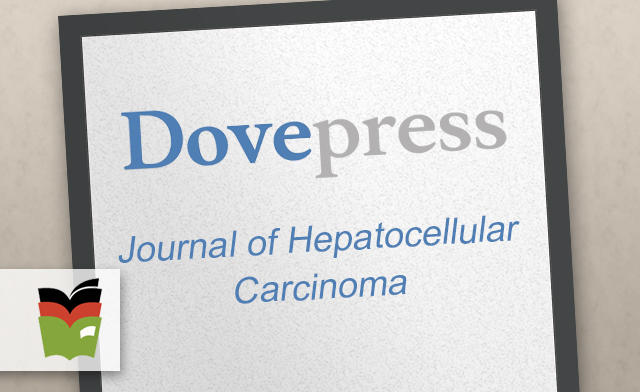Purpose: To evaluate the value of follow-up chest CT in the surveillance of HCC patients.
Background: Imaging guidelines for the surveillance of hepatocellular carcinoma (HCC) patients recommend multiple follow-up computed tomography (CT) examinations of the chest, abdomen, and pelvis. Imaging studies are a major driver of rising healthcare costs. The appropriate use of imaging studies must be evaluated to provide valued health care.
Methods: We reviewed the radiology reports of baseline and follow-up chest, abdominal, and pelvic CT examinations of HCC patients. We categorized the incidence of malignancy in the chest and abdomen for the baseline and follow-up examinations. We also categorized the follow-up examinations as showing improved disease, stable disease, or disease progression. We correlated any progression of disease in the chest with progression of disease in the abdomen. We determined the extent to which disease progression in the chest occurred alongside that in the abdomen. Descriptive statistical analysis was carried out using R (version 3.5.2, R Development Core Team).
Results: Of the 226 patients included in our study, only 7 (3%) had disease progression in the chest without corresponding disease progression in the abdomen and pelvis on follow-up CT. Only 1.8% of patients with disease progression in the chest had a negative CT chest at baseline.
Conclusion: Follow-up chest CT has limited benefit in the surveillance of HCC patients, especially those with negative baseline chest CT findings.
Keywords: malignancy, imaging, staging, metastases, benefit, cost-effective
INTRODUCTION
Hepatocellular carcinoma (HCC) is the third most common cause of cancer-related death worldwide, with almost 30,000 new cases diagnosed annually in the United States alone.1 The incidence of HCC is predicted to increase steeply throughout the next decade owing to sustained increase in rates of obesity and obesity-related health problems.2
Imaging plays a major role in the surveillance of HCC patients.3 The current National Comprehensive Cancer Network guidelines for the surveillance of HCC patients include imaging with computed tomography (CT) of the chest and multiphasic CT or magnetic resonance imaging (MRI) of the abdomen and pelvis every 3–6 months for 2 years and then every 6–12 months thereafter.4 CT imaging of the chest, abdomen and pelvis results in excessive radiation exposure to the patient. Evaluation of the value of imaging is important to reduce possible unnecessary exposure to radiation. When combining the CT imaging of the chest, abdomen and pelvis in a single examination there is an increase in the total number of images required for interpretation by the radiologists. Reducing unnecessary imaging should result in reducing radiologist’s fatigue that may lead to diagnostic errors.5 Finally, imaging is also considered to be the most important factor driving the rise of healthcare costs in the United States.6 Therefore, it is important to assess the benefit of imaging in each clinical scenario.
Abdominal CT or MRI with a liver protocol is clearly indicated for the surveillance of localized HCC in the liver. However, the role of additional imaging beyond the abdomen remains unclear. Some researchers have recommended the discontinuation of pelvic imaging.7 Others have reported the low incidence of findings of extrahepatic disease, including that in the chest, in HCC patients.8,9
To our knowledge, no study has assessed the role of follow-up chest CT in the surveillance of HCC patients. There is a need for evidence-based medicine to support the current guidelines for surveillance of patients with HCC with serial CT chest examinations. The purpose of the present study is to evaluate the benefit of follow-up chest CT in HCC patients. We hypothesized that, following a baseline chest CT examination, follow-up chest CT has a limited role in the surveillance of HCC patients, especially those with a negative baseline chest CT examination.
MATERIALS AND METHODS
Patient Population
This retrospective study was approved by our institution’s (University of Texas MD Anderson Cancer Center) Institutional Review Board, and informed consent was waived because of the retrospective nature of the study. The data accessed complied with relevant data protection and privacy regulations. We searched our institution’s electronic health record (EHR) to identify patients who were diagnosed with HCC from March 2016 through April 2019 and who underwent baseline CT examination of the abdomen and chest and follow-up CT examination of the same areas at least 6 weeks later. The radiology reports, laboratory data, and demographics of the patients who met the study’s inclusion criteria were extracted from the EHR.
Imaging Techniques
All CT examinations were performed using multi-detector CT systems from GE Healthcare (Chicago, IL, USA) or Siemens Healthineers (Erlangen, Germany). CT liver protocols were performed with intravenous contrast. With the use of a bolus-tracking technique, the late arterial phase was acquired 17 seconds after a 100-HU threshold was reached at the celiac artery. This is approximately at 25s after the initiation of contrast. The portal venous phase of the abdomen and pelvis was acquired approximately 60–70 seconds after contrast administration. The chest, abdomen, and pelvis were imaged approximately 3 minutes after contrast administration. All patients also underwent non-contrast-enhanced CT of the liver.
Data Analysis
Data on the location of disease in the abdomen and chest were extracted from the radiology reports of the baseline and follow-up CT examinations. For both the baseline and follow-up CT examinations, metastatic disease was categorized as occurring in 1 of 3 locations: 1) chest, 2) liver, or 3) abdomen (extrahepatic). The results of the follow-up CT examinations were categorized as showing 1) stable disease, 2) improved disease, or 3) disease progression. The radiology report was used to categorize disease status. The reports with indeterminate findings were not considered malignant. Only reports of definite metastatic disease were considered malignant. For patients whose follow-up CT examinations showed disease progression in the chest, we assessed with follow-up CT findings in the liver and/or abdomen. Clinical and tumor characteristics were summarized using frequencies and percentages. Descriptive statistical analysis was carried out using R-statistics (version 3.5.2, R Development Core Team).
READ FULL ARTICLE
![]() From DovePress
From DovePress
